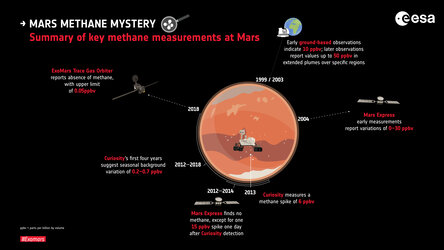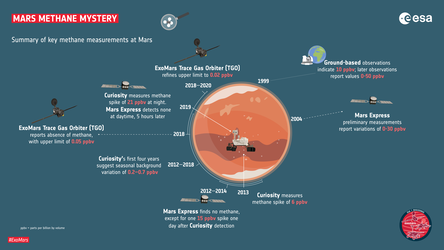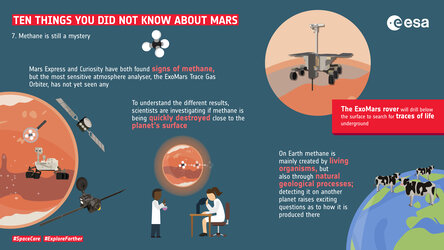Accept all cookies Accept only essential cookies See our Cookie Notice

About ESA
The European Space Agency (ESA) is Europe’s gateway to space. Its mission is to shape the development of Europe’s space capability and ensure that investment in space continues to deliver benefits to the citizens of Europe and the world.
Highlights
ESA - United space in Europe
This is ESA ESA facts Member States & Cooperating States Funding Director General Top management For Member State Delegations European vision European Space Policy ESA & EU Space Councils Responsibility & Sustainability Annual Report Calendar of meetings Corporate newsEstablishments & sites
ESA Headquarters ESA ESTEC ESA ESOC ESA ESRIN ESA EAC ESA ESAC Europe's Spaceport ESA ESEC ESA ECSAT Brussels Office Washington OfficeWorking with ESA
Business with ESA ESA Commercialisation Gateway Law at ESA Careers Cyber resilience at ESA IT at ESA Newsroom Partnerships Merchandising Licence Education Open Space Innovation Platform Integrity and Reporting Administrative Tribunal Health and SafetyMore about ESA
History ESA Historical Archives Exhibitions Publications Art & Culture ESA Merchandise Kids Diversity ESA Brand Centre ESA ChampionsLatest
Space in Member States
Find out more about space activities in our 23 Member States, and understand how ESA works together with their national agencies, institutions and organisations.
Science & Exploration
Exploring our Solar System and unlocking the secrets of the Universe
Go to topicAstronauts
Missions
Juice Euclid Webb Solar Orbiter BepiColombo Gaia ExoMars Cheops Exoplanet missions More missionsActivities
International Space Station Orion service module Gateway Concordia Caves & Pangaea BenefitsLatest
Space Safety
Protecting life and infrastructure on Earth and in orbit
Go to topicAsteroids
Asteroids and Planetary Defence Asteroid danger explained Flyeye telescope: asteroid detection Hera mission: asteroid deflection Near-Earth Object Coordination CentreSpace junk
About space debris Space debris by the numbers Space Environment Report In space refuelling, refurbishing and removingSafety from space
Clean Space ecodesign Zero Debris Technologies Space for Earth Supporting Sustainable DevelopmentLatest
Applications
Using space to benefit citizens and meet future challenges on Earth
Go to topicObserving the Earth
Observing the Earth Future EO Copernicus Meteorology Space for our climate Satellite missionsCommercialisation
ESA Commercialisation Gateway Open Space Innovation Platform Business Incubation ESA Space SolutionsLatest
Enabling & Support
Making space accessible and developing the technologies for the future
Go to topicBuilding missions
Space Engineering and Technology Test centre Laboratories Concurrent Design Facility Preparing for the future Shaping the Future Discovery and Preparation Advanced Concepts TeamSpace transportation
Space Transportation Ariane Vega Space Rider Future space transportation Boost! Europe's Spaceport Launches from Europe's Spaceport from 2012Latest

Mars Express matches methane spike measured by Curiosity
Thank you for liking
You have already liked this page, you can only like it once!
Data collected by the Planetary Fourier Spectrometer onboard ESA’s Mars Express during the first 20 months of NASA’s Curiosity mission found one case of correlated methane detection, the first time an in-situ measurement has been independently confirmed from orbit. Ten other observations in the Mars Express study period reported no detections at the limit of the spectrometer’s sensitivity; all of these correspond to a period of low measurements reported by Curiosity.
The details of the methane spike are illustrated in this graphic – the Mars Express detection was made one day after the elevated reading recorded by Curiosity, which is exploring Gale Crater, just south of the martian equator. Taken together, the two results can be used to examine the possible source region for the methane.
Two independent analyses were made, by examining a wide region around Gale Crater. The region was divided into grids of about 250 by 250 square kilometres, and in one study, computer simulations were used to predict the probability of methane emission from each square (indicated by the numbers in each square). The simulations took into account the measured data, expected atmospheric circulation patterns, and methane release intensity and duration based on the geological phenomenon of ‘gas seepage’. In the other study, geologists scrutinised the region for features where gas seepage is expected – these are the kind of features that might be associated with methane release.
The geological analysis pointed to one of the regions that the computer simulations predicted would be the most likely region for methane release. The area marked by the black dots is thought to contain shallow ice that could easily trap subsurface methane, and tectonic faults in the grid square between this region and Gale Crater are thought to extend below the surface and break through the ice, causing the episodic release of methane.
More information: Mars Express matches methane spike measured by Curiosity
-
CREDIT
ESA/Giuranna et al (2019) -
LICENCE
ESA Standard Licence

Key methane measurements at Mars

Key methane measurements at Mars

Key methane measurements at Mars

Methane concentration















 Germany
Germany
 Austria
Austria
 Belgium
Belgium
 Denmark
Denmark
 Spain
Spain
 Estonia
Estonia
 Finland
Finland
 France
France
 Greece
Greece
 Hungary
Hungary
 Ireland
Ireland
 Italy
Italy
 Luxembourg
Luxembourg
 Norway
Norway
 The Netherlands
The Netherlands
 Poland
Poland
 Portugal
Portugal
 Czechia
Czechia
 Romania
Romania
 United Kingdom
United Kingdom
 Slovenia
Slovenia
 Sweden
Sweden
 Switzerland
Switzerland


























